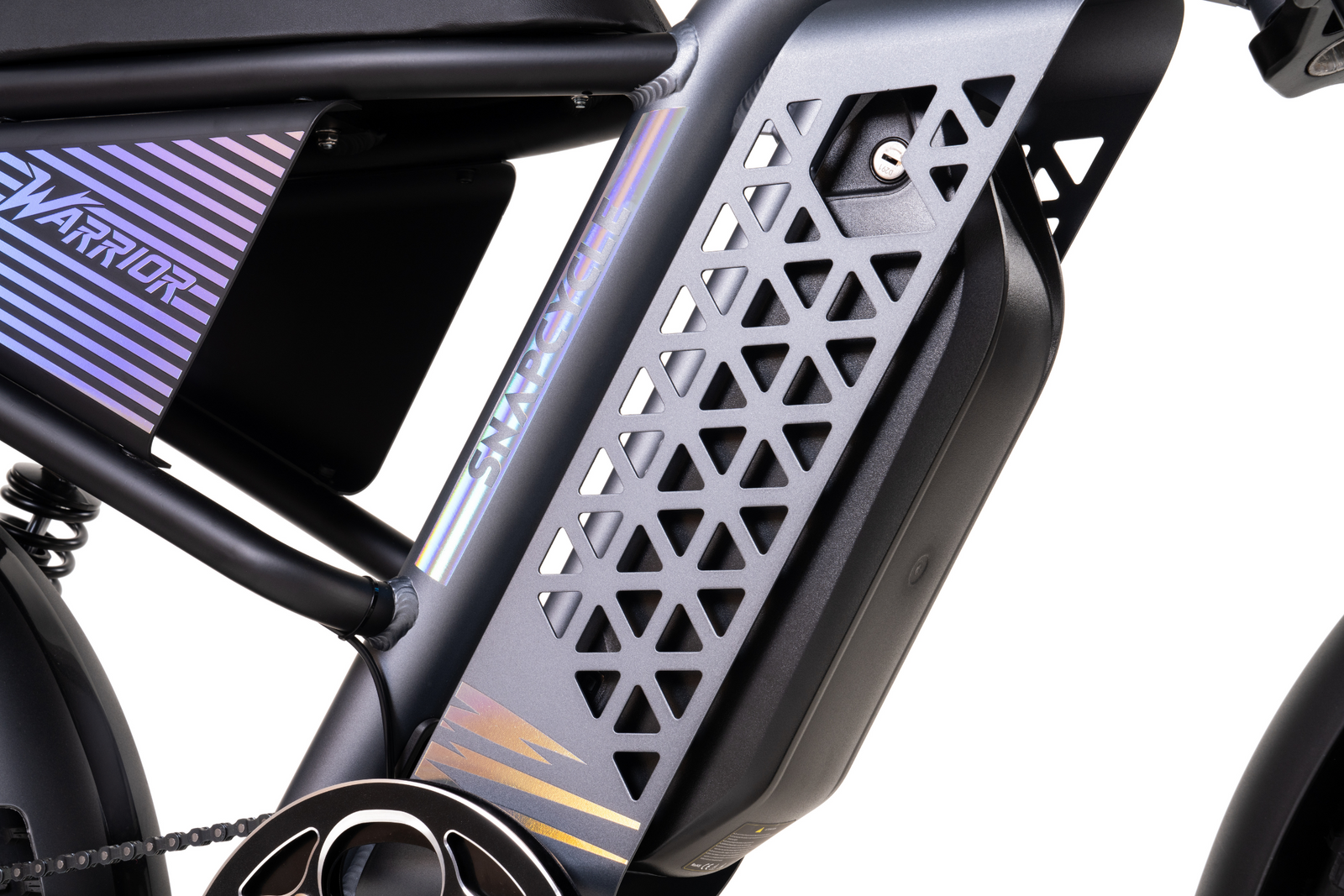Some of the common problems while saving Ebike batteries in winter. If you are following the expert advice if you want to save e-bike batteries in the winter weather, then you should know about the problems that e-bike usersr have to face when they try to save and store e-bike batteries for the long run. Efforts to save and store e-bike batteries for the long run. Moreover, to buy ebikes with quality features you should go to the best ebike retailer at your nearest possible location.
Winter Causes Slower Chemical Reactions In Ebike Batteries
Extremely cold temperatures slow the chemical reactions happening in the electric bike battery, making it less able to absorb or give off energy. However, this can cause slower charging times and lower overall performance, particularly when it comes to peak power demand. To counter that, many electric vehicles have battery thermal management systems to keep them operating at optimal temperatures.
Cold Conditions Thickens The Electrolyte Inside The E-Bike Batteries
Cold weather thickens electrolytes inside the battery and increases resistance, hindering the flow of ions. As a result, the battery's power output is reduced, it charges slower, and it generates more heat in the battery for winter. Battery thermal management systems can mitigate some of this, but temperature can still negatively impact performance quite a lot.
Overall Capacity Loss Of Battery Cells
Excessive exposure to extreme cold can actually do permanent damage to the batteries of the eBikes in winter, reducing capacity overall. If this goes on for long, it can greatly reduce its ability to get a charge and carry that charge to power the vehicle over time. Extended exposure to extreme cold should be avoided, as this is one of the leading reasons for capacity loss.
E-Bike Batteries Become Unable To Deliver Full Power Output
In cold conditions, the battery may have a tough time giving its full power output, meaning that your horse might struggle for acceleration and hill climbing. It can be especially pronounced in electric vehicles capable of great performance. Battery thermal management systems can provide some relief from this, but it’s important to recognize that performance limitations when it’s cold can be tempering issues as well.
Winter makes the bike Battery Unable To Get Charged Completely.
A cold battery won’t be efficient when getting charged, since the battery may not have the ability to absorb the charge as well. In fact, it might result in longer charge cycles and reduced capacity overall. For optimal charging efficiency, it is suggested that for expert winter battery care, some conditions can be pre‑conditioned or the cell and battery brought to a warmer temperature before charging.
Long-Term Storage Damage In Ebike Batteries
Long-term storage (even fully charged) in cold temperatures can significantly shorten the service life of a battery. To minimize degradation, batteries should be stored at moderate temperatures and with a moderate state of charge. It also helps to use a battery maintainer to prevent deep discharge and keep your battery healthy when stored.
Charging Damage When Done At Extremely Low Temperatures
It could also damage your cells, making them live shorter lives if you charge a battery at extremely low temperatures. To prevent irreparable damage, it's important to not charge a battery when it’s very cold. Many modern electric vehicles contain an extra level of protection to avoid charging at very cold temperatures.
Long Term Battery Storage In Winter Cause Deep Discharge Risk
Electric bike riders must know about the deep discharge from a battery. When the battery is stored too long without charging will damage cells permanently. It is important too to periodically charge the battery to prevent this. But modern day battery management systems usually contain preventatives to deep discharge, but it’s still good practice to monitor the battery’s state of charge when storing it for long periods.
5 Expert Tricks to Save E-bike Battery in Winter
Controlling The Temperature For Your Ebike Battery
Battery performance and longevity are greatly dependent on temperature control. It is highly recommended that the Tec has indoor storage to protect the battery from extremely cold conditions, which can greatly reduce capacity and power output. Prior to a ride, pre-warming the battery (either in the garage or with a battery warmer) can make a world of difference. It's also important tnot to charge the battery in below-freezing or sub-zero temperatures, as this will damage the cells and shorten your battery's life. By adhering to these temperature control guidelines, you can achieve best-in-class range, power, and battery health for your electric vehicle.
How To Smart Charge My E-Bike Battery?
Charge your battery indoors at room temperature first. Batteries do not like cold temperatures and cold temperatures can play havoc on battery performance and battery life. Secondly, do not leave your battery completely drained. However, it’s better to recharge when it gets to about 20% to keep the battery healthy. Lastly, charge your e-bike battery with a high-quality charger specially made for your e-bike battery. Having a compatible charger helps avoid damaging the battery cells and also ensures better charging.
What Are The Core E-Bike Maintenance Practices?
A couple of factors play a key to optimize your bike's performance and efficiency. First is the reduced rolling resistance that helps smooth pedaling and increase speed; first of all, it saves your energy and saves your strength. Secondly, cleaning and lubricating your chain on a regular basis prevents friction so that you have a smooth shift through the gears and power transfer. Moreover, well-maintained brakes are essential for not wasting unnecessary amounts of energy. The good news is that you can greatly improve your cycling experience and save some energy by tackling these issues.
Estimating The Ride Time And Distance For Best Battery Usage
Routing your electric bike could make or break the battery life of your electric bike battery, so plan accordingly. It’s best to minimize stops and starts, each of which can really take a big bite out of the battery. It also saves energy when the pedaling can be kept consistent. By utilizing lower assistance levels whenever possible, you’ll not only conserve battery power but you will extend your ride time and overall range.
Minimizing The Winter Weather Impacts
The weather during winter can affect your electric vehicle’s performance and how long it lasts. To ensure optimal performance and longevity, consider taking the following precautions:
If you haven’t already, invest in a set of winter tires made for cold weather. With these tires, you’re guaranteed the best grip on icy and snowy roads, enhanced traction and fewer chances of accidents. They also have lower rolling resistance and conservation of energy and increase your vehicle range.
Fenders can protect your vehicle's sensitive parts. These accessories protect the battery and other important parts from water, snow, and road debris, keeping it from being damaged and acting at its best.
Finally, bundle up! Putting on warm clothing can make you a lot more comfortable, which means you need less high-power assistance from your vehicle’s heating system, saving energy and lengthening your range.
FAQs
Where to buy ebikes online?
There are many online retailers and sellers of Electric bikes, such as Snacpcycle. You can make a purchase that fits your riding needs of an ebike. .
What ebikes batteries are good to go and affordable?
Snapcyle EAGLE Battery and PEGASUS Battery are good to go and also they are affordable for everyone.
What is the price of an ebike battery?
The average price of an ebike battery depends upon the size, company and usage of the e-bike. Typically you may pay between $500 to $600 for an ebike battery..

